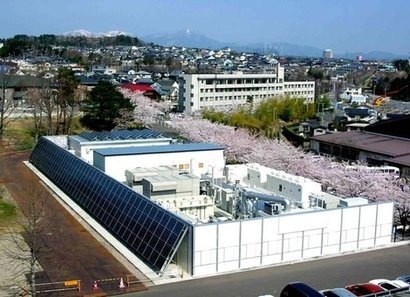
The model accurately predicts uncertain parameters related to renewable energy sources for microgrid operation, their energy demand, and market prices. Microgrids are a promising solution for the integration of renewable energy sources, such as solar PV and wind turbines, to power supply networks, supported by energy storage.
The forecasting model developed by the research team at Chung-Ang university employs a long short-term memory network and demand response programme to manage uncertainties more efficiently than existing prediction models.
Existing conventional prediction methods consider various possible future scenarios and their probabilities. This approach has several drawbacks, including a low prediction accuracy. To overcome them, researchers have resorted to deep learning-based models. While they make accurate predictions, their hyperparameters – variables that control the learning process – must be appropriately optimised.
Professor Mun-Kyeom Kim of the Department of Energy System Engineering at Chung-Ang University, Korea, in collaboration with Hyung-Joon Kim, recently proposed a novel deep learning-based forecasting model to accurately predict the uncertain parameters for optimal and profitable microgrid operation. Their work was made available online on 21 December 2022 and published in Volume 332 of the journal Applied Energy on 15 February 2023.
“The proposed data-driven forecasting method employs a long short-term memory (LSTM) model, an artificial neural network with feedback connections” said Professor Kim. “Its hyperparameters are optimised by a genetic algorithm-adaptive weight particle swarm optimisation (GA-AWPSO) algorithm, while a global attention mechanism (GAM) identifies important features from input parameter data. Both these algorithms can help overcome the limitations of the conventional methods and improve the prediction accuracy and efficiency of the LSTM model.”
In their work, the researchers also developed a data mining and incentive-based demand response (DM-CIDR) programme for handling uncertainties pertaining to energy demand and market prices. Herein, ordering points to identify the clustering structure (OPTICS) and k-nearest neighbour (k-NN) algorithms were used to determine the optimal incentive rates for customers in the day-ahead energy market.
To demonstrate the performance of their GA-AWPSO-LSTM-GAM model and DM-CIDR programme, the researchers implemented them on the historical Pennsylvania-New Jersey-Maryland(PJM) Interconnection energy market data. The model had a lower forecasting error than existing prediction models and provided the best correlation values for predicting the availability of RESs. In particular, it obtained a coefficient of determination value of 0.96 for solar panels, surpassing that obtained from the existing models.
With these findings, the researchers have high hopes for their proposed prediction model.
“It will accelerate the integration of renewable resources in power supply networks while enabling MG operators to solve day-ahead energy management issues” added Professor Kim. “This, in turn, will improve the regional electric grid reliability, provide low-cost clean energy to people, and promote local sustainability. Ultimately, it can open doors to zero-emission electricity sources that can make carbon neutrality by 2050 a realistic goal to achieve.”
For additional information:

